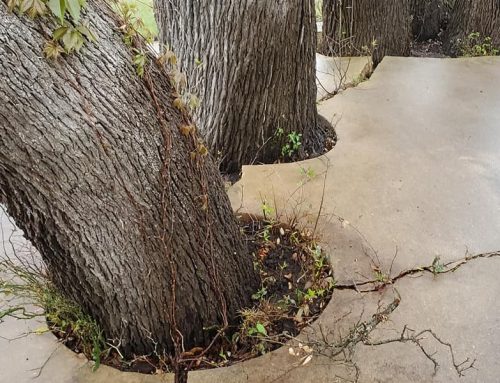Healthy trees do more than beautify your lawn—they also provide shade, privacy from prying eyes, and act as a buffer from harsh winds. Like most things in life, your trees need some TLC to keep them safe from extreme weather, pests, and diseases. One of the most critical aspects of proper tree care is aerating the soil.
Reach out to the best air spading experts in Kerrville, TX, for professional help in soil aeration.
What Is Soil Aeration?
Did you know that tree roots absorb oxygen from the soil? When you have compacted soil, your trees may suffocate from limited air space and lack of oxygen. Compacted soils also lead to drainage problems, poor water absorption, and an uninhabitable environment for beneficial microorganisms to thrive and provide nutrients for tree growth.
Soil aeration, also commonly known as soil de-compaction, creates sufficient air space, giving your tree’s roots room to breathe. So, how do you benefit from aerating the soil?
Benefits of Soil Aeration
When trees lack oxygen, their roots can suffocate, weakening the trees further and making them more likely to succumb to injuries. In some cases, trees can die because they lack sufficient nourishment or water from the soil. Some advantages of soil aeration include the following.
Enables Water to Reach the Subsoil
Compact soil impedes your tree’s roots and prevents irrigation and rainwater from reaching the subsoil. Even if you already have deep-rooted trees, the roots will try to shift upwards to access trapped water. Eventually, shallow and parched roots start dying underground, weakening your tree further. Aerated soil lets water seep into the ground to access your trees’ roots easily.
Creates a Conducive Environment for New Roots to Grow Strong
New trees have young root systems that need to stretch out and grab deep into the soil. But when you have compact soil, the new roots struggle to grow. That means your trees will develop shallow root systems that compromise the trees’ general health and stability.
Enables Fertilizer Treatments to Reach All the Roots
Trees need plenty of micronutrients to thrive. If your tree care service recommends fertilizer treatments, make sure you have well-aerated soil that will allow the treatments to penetrate the soil and reach all of your trees’ roots.
How To Tell if Soil Needs Aerating
Watch out for the following telltale signs that the soil around your tree(s) has become compacted and needs aerating.
Excess Water Pooling
If rainwater or water from irrigation pools around your tree, you likely have compacted soil. Aeration improves drainage by boosting your soil’s capacity to absorb water.
Bare Soil
Bare patches of soil show that your lawn likely has compacted soil. Aeration promotes even growth by providing seedlings access to air, water, and nutrients.
Use Soil Penetrometer
A soil penetrometer enables you to assess the compaction of your soil. The device comes with a pressure gauge that can help you determine if you have compact soil and the depth of the compacted soil.
Soil Aeration Tools
Once you determine that you have compacted soil, it’s time to start aerating the soil. The most common tools used for soil aeration include:
- Spike Aerators: A spike aerator uses sharp spikes to puncture the soil and create spaces for air and water.
- Plug Aerators: A plug aerator uses hollow spikes to penetrate and hollow out the soil.
Spike aerators work well as a short-term solution, while soil plugs offer long-term results.
We Help With Aerating the Soil
Rockoff Tree Solutions has a team of certified arborists who provide an extensive range of professional tree services. Call us today at 830-955-0304 or email karenrockoff@gmail.com to learn more about soil aeration and get professional help aerating the soil on your lawn.



